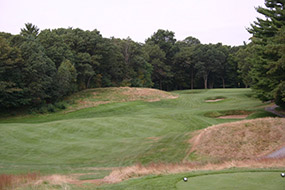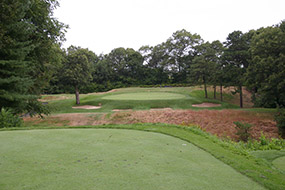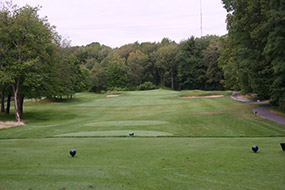The origins of the Salem Country Club date back to 1895, and a short nine-hole course built in the seaside city of Salem, north of Boston. The membership quickly grew and in 1925 the club moved to a heavily treed farm in nearby Peabody, where prolific architect Donald Ross was able to build them a new full-length 18-holer.
Despite thousands of trees being felled during construction, in terms of terrain Ross virtually left the rolling landscape untouched and produced a quality layout full of interesting holes and creative green complexes. Controlling your approach shots here is the key to good scoring as the green contouring varies greatly and keeping your ball under the hole throughout the round is essential.
Among the highlights are stirring approach shots into the uphill opening green and the trio of finishing fours, each with putting contours that are more complicated than first apparent. The long, downhill par three 6th and the shorter 12th, with its tiered green banked into a rise, are also very good. As is the strong par four 9th, which follows a bumpy fairway shelf and then falls across water into a green pitched steeply to the front. Best of all, however, is the mid-length par four 13th, played first into a fairway hollow and then up into a lumpy, triple-tiered target set on a slight elevation. Ross apparently once described this green as the finest he had ever designed.
What differentiates Salem from other New England courses of this vintage is its manicured, parkland appearance and the absence of rugged native grasses. The modern layout remains very true to the original Ross design and although a number of drive bunkers have become dated by technology, the addition of some sensible back tees has ensured the course remains a relevant test of your golfing smarts.

 this course also has exceptional:
this course also has exceptional:


